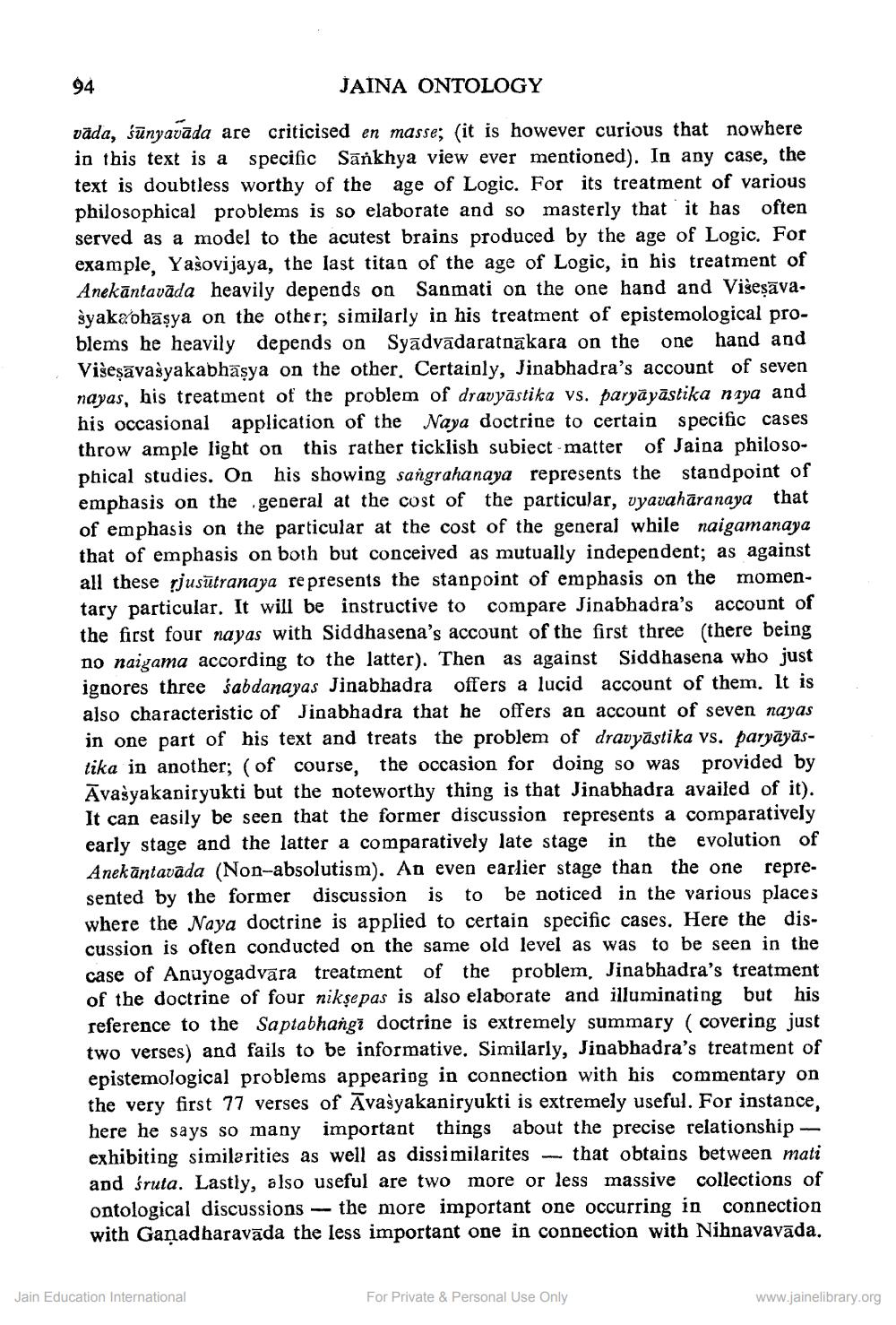________________
JAINA ONTOLOGY
vada, sunyavada are criticised en masse; (it is however curious that nowhere in this text is a specific Sankhya view ever mentioned). In any case, the text is doubtless worthy of the age of Logic. For its treatment of various philosophical problems is so elaborate and so masterly that it has often served as a model to the acutest brains produced by the age of Logic. For example, Yasovijaya, the last titan of the age of Logic, in his treatment of Anekantavāda heavily depends on Sanmati on the one hand and Višeṣāva. syakaohaṣya on the other; similarly in his treatment of epistemological problems he heavily depends on Syadvādaratnākara on the one hand and Viseṣāvasyakabhaṣya on the other. Certainly, Jinabhadra's account of seven nayas, his treatment of the problem of dravyāstika vs. paryāyāstika naya and his occasional application of the Naya doctrine to certain specific cases throw ample light on this rather ticklish subiect matter of Jaina philosophical studies. On his showing sangrahanaya represents the standpoint of emphasis on the general at the cost of the particular, vyavaharanaya that of emphasis on the particular at the cost of the general while naigamanaya that of emphasis on both but conceived as mutually independent; as against all these rjusutranaya represents the stanpoint of emphasis on the momentary particular. It will be instructive to compare Jinabhadra's account of the first four nayas with Siddhasena's account of the first three (there being no naigama according to the latter). Then as against Siddhasena who just ignores three sabdanayas Jinabhadra offers a lucid account of them. It is also characteristic of Jinabhadra that he offers an account of seven nayas in one part of his text and treats the problem of dravyāstika vs. paryāyāstika in another; (of course, the occasion for doing so was provided by Avasyakaniryukti but the noteworthy thing is that Jinabhadra availed of it). It can easily be seen that the former discussion represents a comparatively early stage and the latter a comparatively late stage in the evolution of Anekantavada (Non-absolutism). An even earlier stage than the one represented by the former discussion is to be noticed in the various places where the Naya doctrine is applied to certain specific cases. Here the discussion is often conducted on the same old level as was to be seen in the case of Anuyogadvara treatment of the problem, Jinabhadra's treatment of the doctrine of four niksepas is also elaborate and illuminating but his reference to the Saptabhangi doctrine is extremely summary (covering just two verses) and fails to be informative. Similarly, Jinabhadra's treatment of epistemological problems appearing in connection with his commentary on the very first 77 verses of Avasyakaniryukti is extremely useful. For instance, here he says so many important things about the precise relationship exhibiting similarities as well as dissimilarites that obtains between mati and śruta. Lastly, also useful are two more or less massive collections of ontological discussions the more important one occurring in connection with Gaṇadharavada the less important one in connection with Nihnavavāda.
94
Jain Education International
――
For Private & Personal Use Only
www.jainelibrary.org




